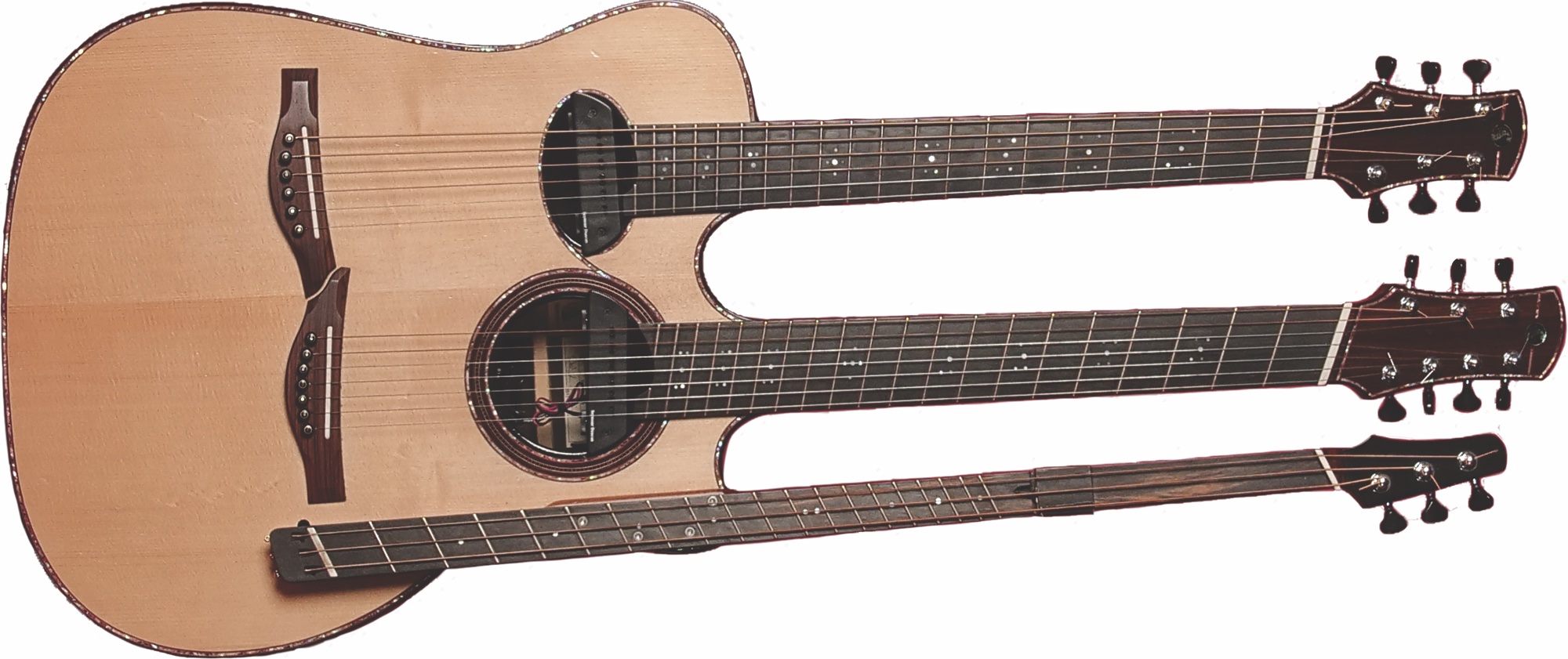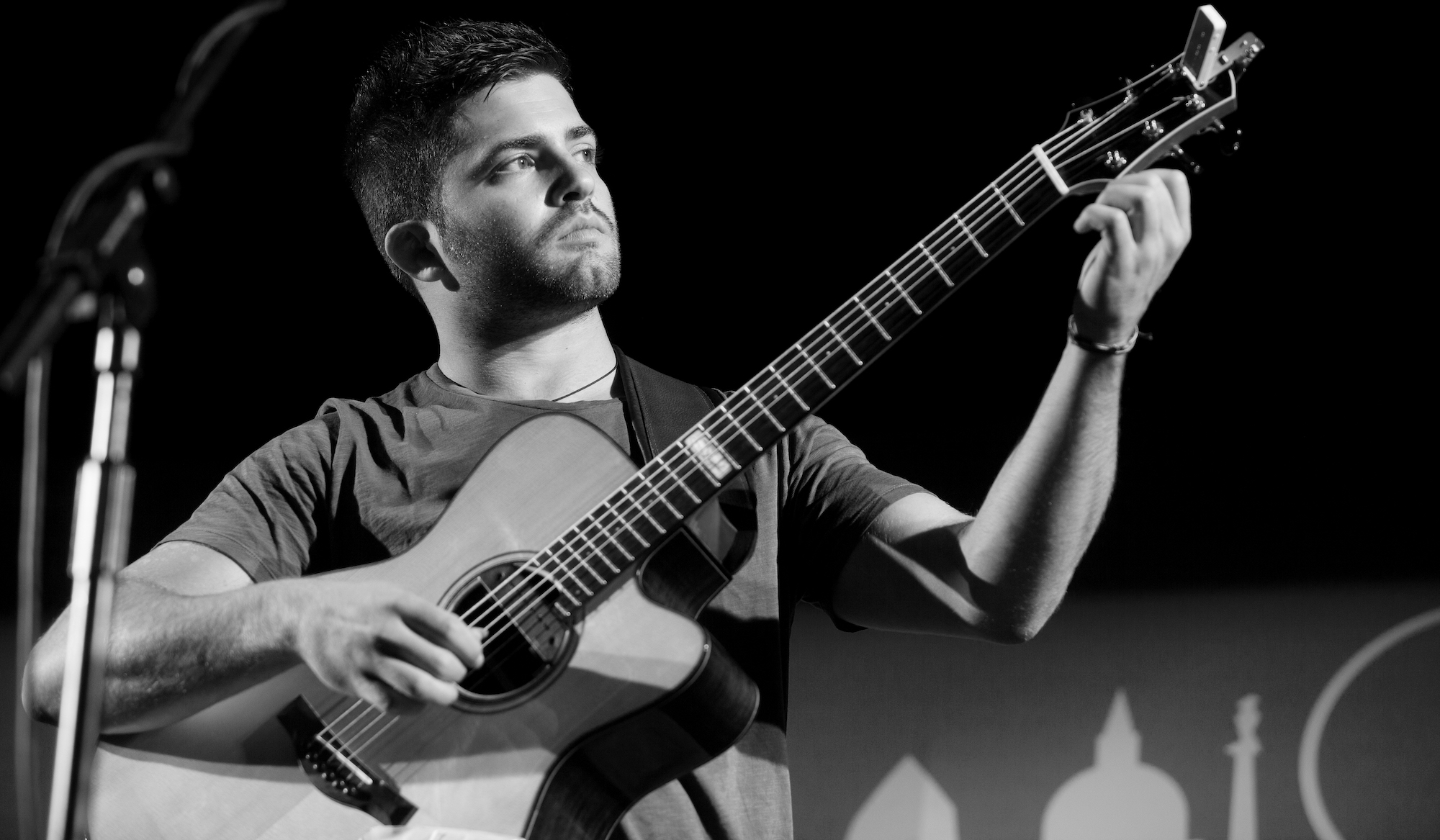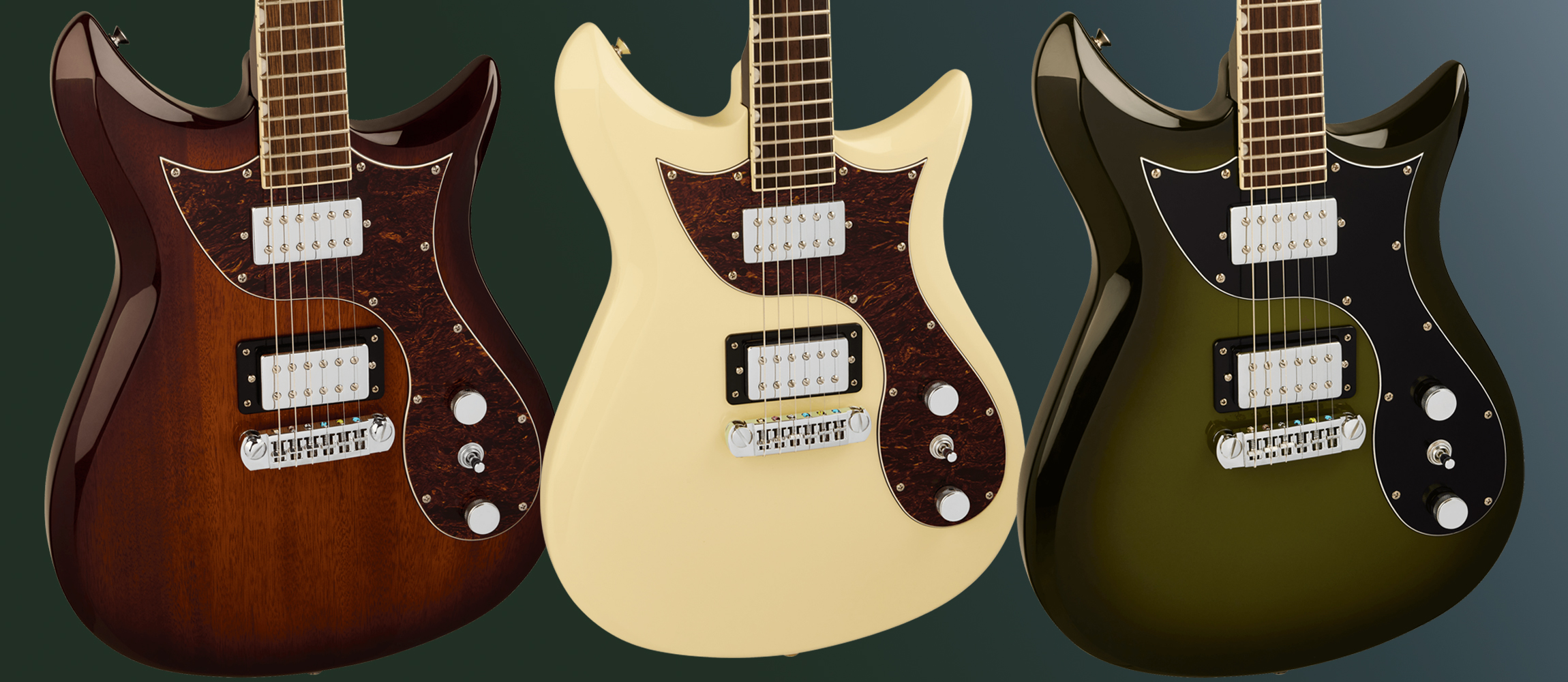“I’ve seen a lot of guitars with multiple necks – often the player uses one or two necks at a time. I use all three on this guitar while also playing percussion”: How acoustic wizard Luca Stricagnoli wrangles his signature triple-neck beast
Making rock, pop, metal, and even hip-hop classics his own with his trademark triple-neck acoustic, Stricagnoli's extraordinary virtuosity stands out, but there's far more to his playing than percussive hits and tapping acrobatics

Watching Luca Stricagnoli play live almost feels like a sporting event where one witnesses a well-trained musical athlete performing extraordinary feats of virtuosity. It’s obvious to anyone that he is no ordinary guitar player.
I took visiting family members to see him play at Freight & Salvage in Berkeley, California, confident that even though a solo acoustic performance wasn't exactly their bag, Stricagnoli's octopus-armed execution of familiar covers would win them over. Mission accomplished. Everyone was floored.
By now we've all seen some amazing percussive fingerstyle arrangements for solo acoustic guitar, both live and on YouTube, the arena that brought the genre to the masses. It's been nearly two decades since CandyRat Records recording artists, spearheaded by Andy McKee, blew up the internet.
Akin to the Beatles on The Ed Sullivan Show, McKee's video for Drifting – currently at a whopping 60 million views – was the big bang that caused droves of millennials to pick up the acoustic and start slapping and tapping like McKee, Antoine Dufour, Don Ross, and other heroes.
Stricagnoli was one of those kids paying very close attention. He eventually became a CandyRat cat for three solo albums, where he took modern fingerstyle to the next level by playing multiple guitars, as well as guitars with multiple necks, simultaneously. He even invented a “reversed slide” neck that can attach magnetically to any guitar. Check out his version of Dire Straits' Money for Nothing for a mind-blowing example.
Stricagnoli ultimately designed a three-necked monster that has become his main axe. When playing it, he cops full band arrangements by using percussive hits for the drums, playing the third neck as the bass, employing the primary neck with his left hand for main themes, and utilizing the secondary neck with his right hand for augmentation.
Since starting out, Stricagnoli has accumulated nearly three-quarters of a million YouTube subscribers. Popular videos include his take on the Red Hot Chili Peppers' Can't Stop, and Eminem's Lose Yourself. In 2022, he threw fans a curveball by collaborating with his wife – singer/songwriter and director Meg Pfeiffer – on a pop album of her tunes called Unsent.
All the latest guitar news, interviews, lessons, reviews, deals and more, direct to your inbox!
His latest independently released single is a jaw-dropping solo arrangement of Muse's Hysteria, and it's a perfect showcase for his singular triple-neck style. He recently spoke with Guitar Player about his gear and technique.
Can you detail how you came to play that three-necked beast?
“I call it a reversed triple-neck guitar, and it represents a culmination of experimentation that lasted for many years. The first neck of the guitar is the regular six-string neck, because that's still the most versatile way to play guitar, like everybody does. I still need that.
“I call the second a soprano neck, because its strings are high-pitched and tuned open to a complementary scale. So it's a little bit like a harp, but different than a harp guitar, which typically has low-pitched sympathetic strings. The inspiration behind the second neck came from wanting to play melodies with both hands independently, like a piano player. While I was playing a melody with my left hand on the first neck using hammer-ons, I would place a second, soprano-tuned guitar horizontally and play melodies and percussion with my right hand.
“I still use a second guitar on stage sometimes, and it's a six-string. I'll adjust the tuning and the capo position according to the key of the song. If I want to change the scale from major to minor, I'll adjust the tuners. Otherwise, I have several SpiderCapos that allow me to use a lot of strange tunings without ever touching the mechanics.

“When I designed the triple-neck, I went with seven strings for the soprano neck, and I use it in much the same way as I would a second, horizontal guitar. I'm most proud of the third neck, because it's a reversed neck, and I believe it's the first one ever on a guitar. It's got three bass strings on a fretboard that extends all the way up by the bridge of the other two necks.
“The concept is to have the most-used frets – say, from one to 12 – closest to the body, where my right hand can access them. That way I can tap notes and play percussion at the same time, whereas if you try to do that on a regular neck, it's much more of a reach and there's nothing but air on either side of it until the neck joins the body way up around the higher frets.
“With the reversed neck on my guitar, I can do a variety of things, from playing bass lines to chords, and at the same time I can use my elbow and extended thumb to play percussion on the top.”
What sort of a thumbpick do you use that allows you to get that percussive stuff happening so well?
“It's not actually a pick – we call it a guitar ring. My wife and I designed that and had it 3-D printed. It’s flat and wide. The idea is to have a large surface hitting the top, so it doesn’t really leave marks on the guitar. It makes a snare sound when you hit the top of the guitar that’s way easier, louder and better sounding than if you just hit it with your thumbnail.”
So by playing the three necks and the thumb-ring percussion, you become like a four-piece band?
“Yeah. I’ve seen a lot of guitars with multiple necks, and usually the player moves from neck to neck with two hands, using one neck at a time or maybe two. But I figured how to use all three on this guitar simultaneously while playing percussion, using the spaces in between that are part of the design.
“My videos for Hysteria, Smooth Criminal and Starboy are good examples. I play a melody by hammering on the first neck with my left hand, I play a bass part on the third neck, and then I reach to the second neck to play a melody on top using open strings. With the percussion, that’s four parts.”
What’s the signal strategy?
“There are four signals. I have a Seymour Duncan Mag Mic in each of the two soundholes. It’s a magnetic pickup with a mic, and you can control the level
of the microphone directly from the pickup. Both signals come out of one output. Many players like to have the microphone separated from the pickup because they use effects and don’t want, for example, delay on the percussion. I barely use any effects at all, so it works well for me.
“I’ve been having fun lately using a Strymon Sunset Dual Overdrive. There’s a magnetic pickup for the third neck as well, and I have a Trance Audio Amulet pickup system that captures the sound of the top in a few spots. It feeds another output. That’s a total of four cables coming out of my guitar and running into a Line 6 stage mixer. I find a balance, cut some frequencies and send one signal over a single cable to the sound guy.”
What guitars do you bring to a typical gig?
“In addition to the reversed triple-neck, I bring a six-string-tuned soprano, my signature six-string grand auditorium, and my reversed slide neck that can be magnetically attached to any guitar. The slide moves on binary strings, like rails. I invented it as my solution to playing slide guitar with just one hand.
“All those guitars are custom-made for me by an amazing Italian luthier, Davide Serracini. Davide’s favorite wood combination is rosewood and spruce, and I love it, too. But my latest guitar is a collaboration with Enya Music, and it’s made of carbon fiber.
“I did a big tour in China, where I got to know them. I loved their carbon-fiber guitars, so we’re developing a new signature model. It’s good to do something completely different. It’s interesting to hear it react to percussive playing. On Enya guitars, the fretboard doesn’t touch the top, so there’s a lot of vibration.”

How did you wind up on the path to being like an Olympic guitarist?
“I’ve had a crush on the guitar since I was a kid. It was a strange obsession, but then I got tired of it. At age 16, I just stopped completely for three years and I started doing judo. When I got back into playing guitar, I discovered the YouTube channel of CandyRat Records.
“The first fingerstyle video I ever saw was Drifting by Andy McKee. A friend of mine from judo knew that I used to play guitar, and he said, ‘Maybe this is for you.’ I finally took out the guitar again and totally got into fingerstyle. Then I discovered Antoine DuFour and all those other players on CandyRat.”
First, there is a need to play one neck with just the left hand, because using two hands to do one task bugs me. I’ve always felt that my approach should be doing one thing at a time, with one hand
Do you have a guitar idol?
“I don’t really have an idol, per se. When I see somebody doing something very well, rather than trying to imitate them, I feel like, ‘Okay, now I need to find my own thing that I can do well.’ I started experimenting and finding funny solutions to guitar problems, and along the way I developed this style.
“First, there is a need to play one neck with just the left hand, because using two hands to do one task bugs me. I’ve always felt that my approach should be doing one thing at a time, with one hand. My left hand is closest to where the frets are on a regular neck, so it got the spotlight a little bit, like, I’ve got to train this. I started using it a lot, and after years of trying to do difficult tasks with one hand, I developed the right muscles and it got strong.
“Some of the arrangements I do for songs like Lose Yourself by Eminem and Snow by the Red Hot Chili Peppers may not appear very difficult to play with one hand hammering on the fretboard, but they are actually very hard. I have fun doing things like in the video for The Prodigy, where I play the xylophone for a breakdown with my right hand while playing the melodic part on the guitar with just the left hand.
“One of the first times I did that was around 2014 in my arrangement for The Last of the Mohicans. To develop the ability to play the whole melody with just the left hand, I would literally rest my right hand on top of the guitar and practice with the left hand, over and over again.”
Can you explain your concept of using tapping and guitar percussion?
“I’ve always felt that you consistently need to have kick and snare going, not just in sections or irregularly. I don’t do a lot of overhand tapping on the fretboard because I don’t like to remove my right hand from the percussion area. I only use tapping when it’s strictly necessary, because if I put the right hand on the fretboard, then I don’t have it available to play a kick or a snare hit. I figured out the reversed neck so I could do tapping and keep the percussion going with the thumb ring on the top.
“I have different ways to create a snare or kick sound, from slapping the side of the guitar to using the thumb on the sixth string. It depends on whatever else I’m playing, but the easiest and best-sounding thing for me to do is keep the plucking hand near the soundhole and use the thumb ring.”
Doing cover arrangements was like a bridge to bring my world together with others that appreciate the same music
How do you choose tunes?
“They are basically a reflection of my musical taste. I’ll look on YouTube to see if anybody else has done a fingerstyle version. I’ve got some original music, but it got a bit repressed in the battle to get my name out there. Doing cover arrangements was like a bridge to bring my world together with others that appreciate the same music.
“Suddenly there was interest in acoustic guitar, and I had a lot of fun doing it. I definitely want to do more music, but making all the parts work for a song that’s already established is stimulating. You can’t simply modify the melody.”
What would you do if you had to play a whole gig with a regular guitar?
“Well, that actually just happened. I had an important gig at the Blue Note in Milan, Italy, which is within a hundred miles of where I grew up. The airline lost my guitars, which were damaged, and I had to do the gig with a Taylor acoustic that was provided. I pulled it off all right, but I’m going to go back when my guitars are fixed and do it right.”

What else exciting is on the horizon?
“I’ll be doing lots of solo touring, and the only exception is International Guitar Night. I host that every two or three years, and the upcoming tour is going to be the biggest so far. There will be 38 concerts across North America with a few other players from different countries with different styles.
“Thu Le is a classical guitar player from Vietnam. Minnie Marks is a blues singer- songwriter from Australia who does a one-woman band-style show. I’ve had great experiences touring with both individually. And the other act on this bill is a classical guitarist from Brazil named Marco Pereira. He’s kind of a legend that I will be meeting for the first time in January. I’m going to meet him in Alaska, and then just a few days later we’ll be playing something together at the first concert.
“I have no idea [how it's going to go], but I’m excited to be hosting this tour that brings guitar players together from around the world.”
- Luca Stricagnoli is currently on tour. For dates and more info, visit his website.
Jimmy Leslie is the former editor of Gig magazine and has more than 20 years of experience writing stories and coordinating GP Presents events for Guitar Player including the past decade acting as Frets acoustic editor. He’s worked with myriad guitar greats spanning generations and styles including Carlos Santana, Jack White, Samantha Fish, Leo Kottke, Tommy Emmanuel, Kaki King and Julian Lage. Jimmy has a side hustle serving as soundtrack sensei at the cruising lifestyle publication Latitudes and Attitudes. See Leslie’s many Guitar Player- and Frets-related videos on his YouTube channel, dig his Allman Brothers tribute at allmondbrothers.com, and check out his acoustic/electric modern classic rock artistry at at spirithustler.com. Visit the hub of his many adventures at jimmyleslie.com
